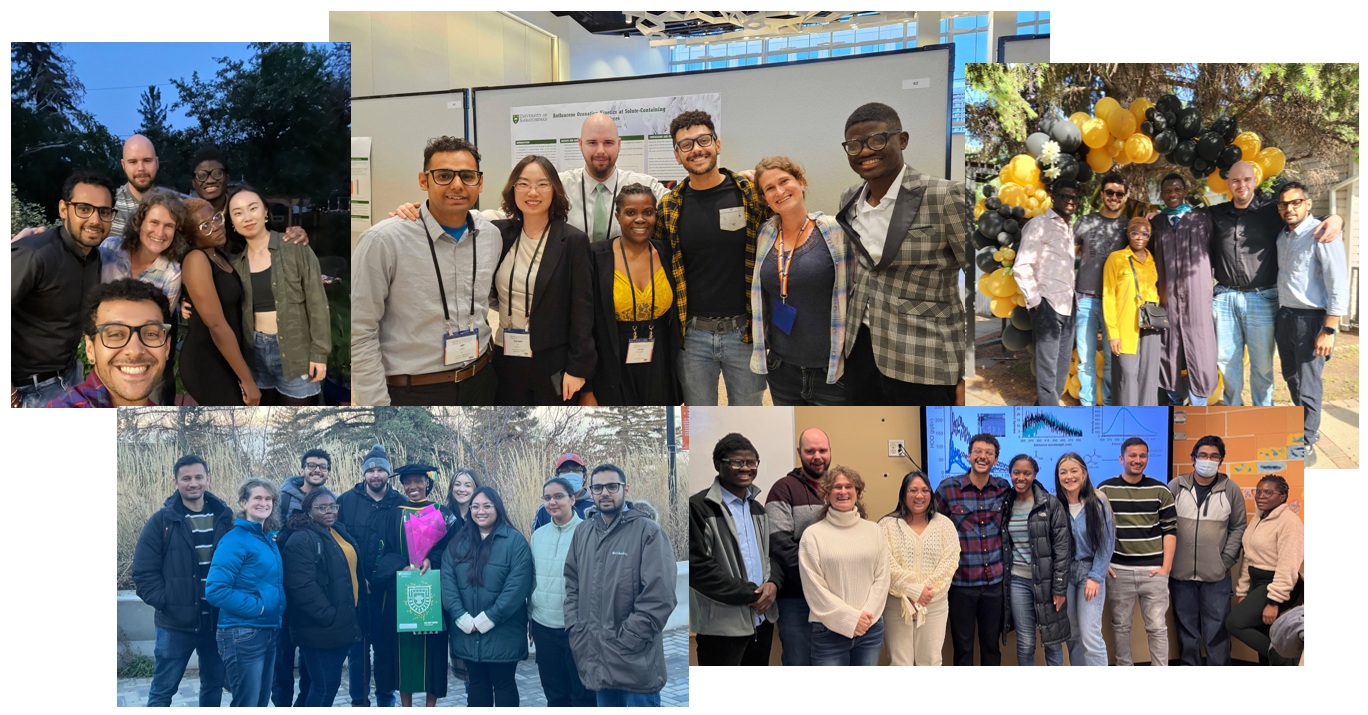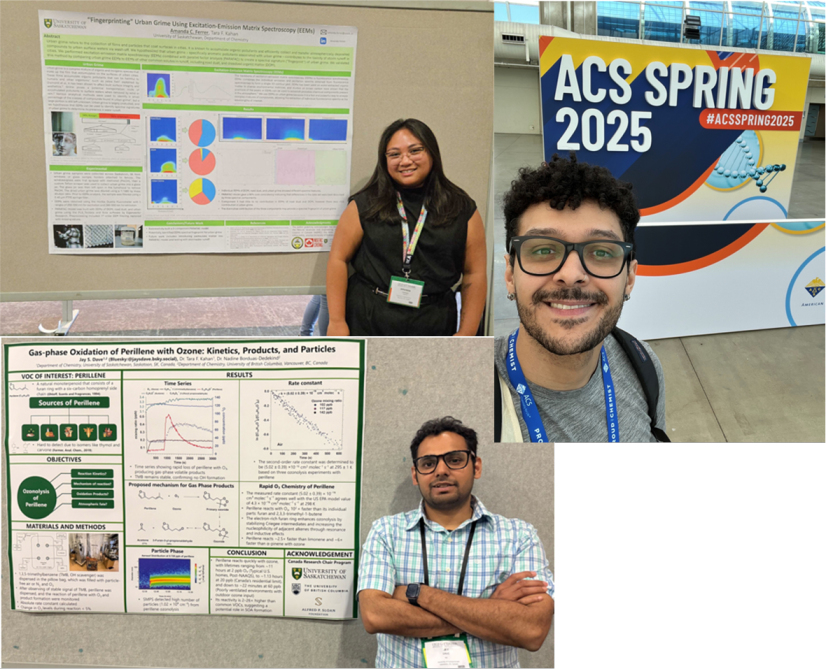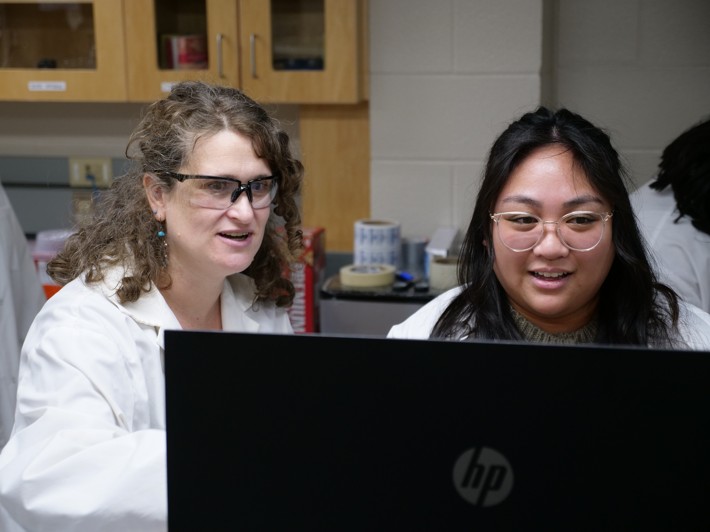Kahan Laboratory
Environmental and Atmospheric Chemistry

In the Kahan Lab, a major goal is to investigate chemical reactivity in the environment, particularly in complex and poorly understood media. We focus mainly on complex, condensed phases in the environment and indoor and outdoor atmospheres. Outdoors, many environmental matrices are poorly understood due to their varying complexity in composition and physical and chemical properties, which further obscure their potential for chemical reactivity and processing of environmental pollutants. Indoors, there are many drivers that affect air quality and contribute to atmospheric processes and chemistry. We investigate the effects of environmental matrix compositions and drivers on chemistry both outdoors and indoors to inform reactivity processes and potential effects on human health. For a deeper understanding of the work we do, go to our research page.
Saskatchewan chemist trying to unlock the mysteries of snow and ice | CBC News
Chemist researching impacts of poor indoor air quality | CBC News
U of S research shows hydrogen peroxide-based cleaners pollute indoor air | CBC News
Examining environmental pollutants in ice and snow - News | University of Saskatchewan
After seeing how gas stoves pollute homes, these researchers are ditching theirs | CBC News
Latest Updates

This past June, Amanda and Jay presented their latest research at CSC 2025 in Ottawa. Amanda presented her work with grime, identifying trends in grime samples compared to their precursors using Excitation-Emission Matrix Spectroscopy (EEMS) and Parallel Factor Analysis (PARAFAC), while Jay presented his work on the ozonolysis of perillene, a compound classified as a furanoid monoterpene, focusing on reaction kinetics, reaction mechanism, oxidation products, and its atmospheric fate.
In March, Pedro gave a talk about disinfection using GUV 222 nm and bleach and the secondary products made from this process at the ACS Spring 2025 Meeting & Expo.
Great job on your work at the conferences!
Check out Dr. Kahan’s take on navigating academia and motherhood in her latest chapter, “Breaking Barriers and Water in Chemistry” with commentary by Chantal Oscar, in the book Navigating Academic Motherhood.
Check out our latest publication, “Particulate Matter and Total Volatile Organic Compound Emissions Following Surface Cleaning: Comparison of Cleaning Agents and Locations,” published as part of ACS Earth and Space Chemistry special issue “Hartmut Herrmann Festschrift”.


